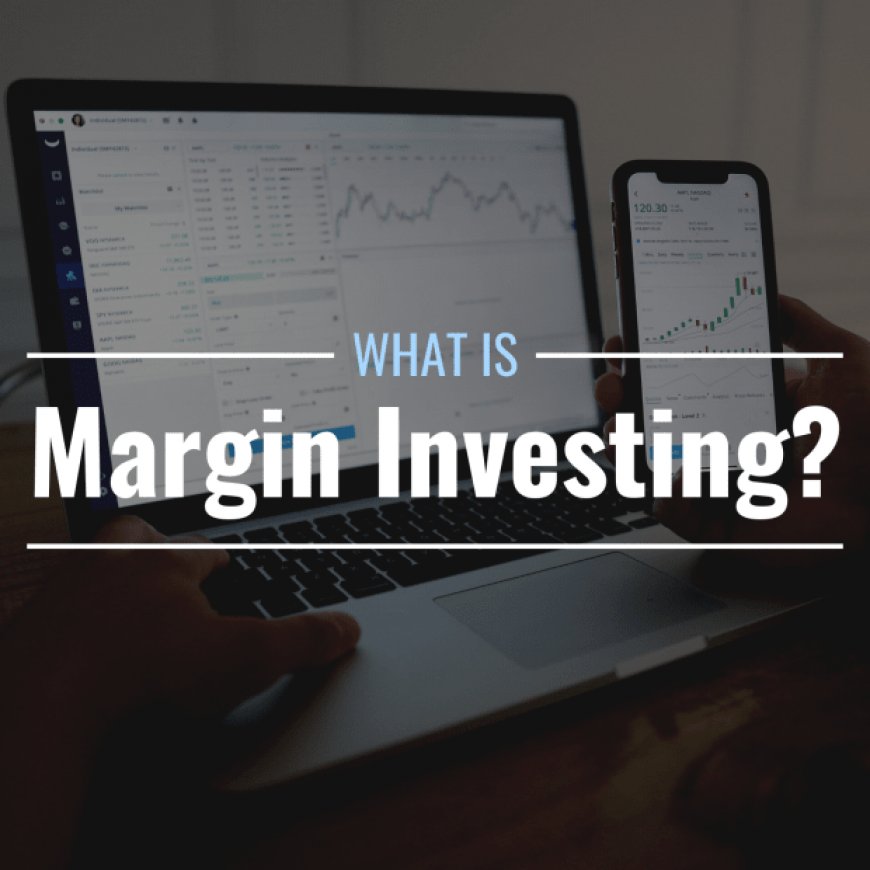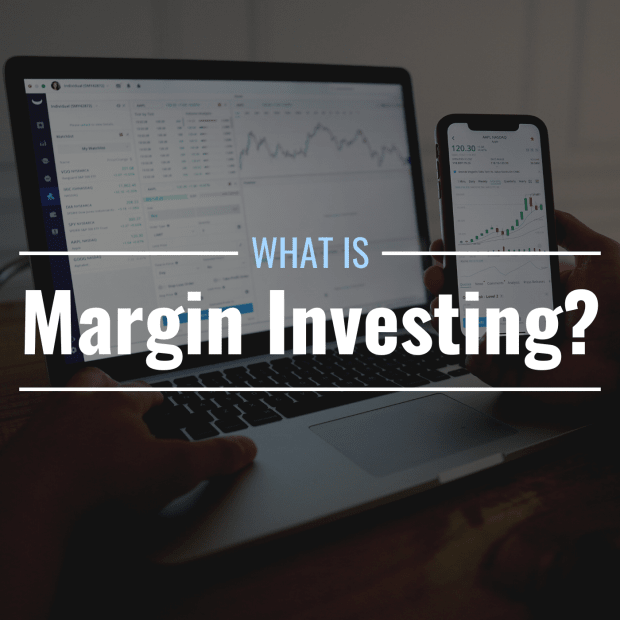What Is a Margin Account & How Does It Work?
What Is a Margin Account?A margin account is a special type of investment account through which an investor can borrow money from their broker to purchase stocks and other securities. In other words, margin investing allows an investor to leverage borrowed money to amplify their returns. Just like ...


What Is a Margin Account?
A margin account is a special type of investment account through which an investor can borrow money from their broker to purchase stocks and other securities. In other words, margin investing allows an investor to leverage borrowed money to amplify their returns.
Just like with a normal loan, the borrower (the margin investor) must pay the lender (their broker-dealer) interest for the use of their borrowed money. This means that the value of their investment must increase by more than the interest charged on the borrowed money in order for a margin investor to successfully make a profit.
Whether the assets they purchase with their broker’s money go up or down in value, a margin investor owes both the full principal (the amount they borrowed) and applicable interest (the amount charged for the use of the borrowed money) back to their broker.
Because margin investing can multiply both gains and losses, it is considered extremely risky and is not recommended to anyone other than experienced traders with high risk tolerance.
How Can an Investor Open a Margin Account?
Any investor with an existing cash brokerage account can apply with their broker to open a margin account. Brokers typically request information about employment, income, and expenses so that they can analyze potential risk before approving an investor for a margin account.
Once approved, an investor must sign a binding legal agreement through which they consent to the terms outlined by their broker about how their margin account will work. This includes agreeing to margin maintenance requirements and the possibility of margin calls (more on these later).
Finally, an investor must deposit a minimum of $2,000 in order to open their margin account. Once this is done, they can begin investing on margin and are initially able to borrow up to 50% of the value of any investment. For instance, if they opened their margin account with the $2,000 minimum, an investor could purchase up to $4,000 worth of stock using the $2,000 in their account and an additional $2,000 borrowed from their broker.
Why Do Brokerages Lend to Investors on Margin?
Brokerages are inclined to loan their customers money on margin because it is an easy way for them to receive guaranteed interest payments with relatively little risk. Margin loans are partially secured because the investor’s equity (the money and stocks in their margin account that they own outright) is used as collateral—the lending broker can liquidate an investor’s positions if need be to resecure their principal loan.
In this way, lending to investors on margin while using their portfolios as collateral presents a fairly safe and easy way for brokerages to generate an additional income stream.
How Much Interest Do Brokers Charge on Margin Accounts?
Like most interest rates, margin rates vary over time depending on prevailing interest rates in the financial sector, which typically vary in step with the Federal funds rate, an interest rate set and managed by the Federal Reserve in response to inflation levels and other factors.
As of June 2023, prevailing margin rates ranged from around 6% to around 15%, depending on the brokerage and margin account balance. Most brokerages charge lower margin rates on higher margin account balances, meaning the more an investor has in their account, the lower their interest rate will be.
How to Calculate Interest on Margin Loans
How much interest an investor will be charged on a margin loan from their broker depends on three things—the amount they borrow, their margin rate, and the amount of time they intend to hold their investment before selling.
For instance, if an investor buys $4,000 worth of Stock XYZ using $2,000 of their own money and $2,000 of their broker’s money, and their margin rate is 7% per year, how much will they pay in interest? This depends on their holding period. Let’s say they sell the investment after 15 days.
First, multiply the borrowed amount by the annual interest rate:
$2,000 * .07 = $140 (this is how much the investor would pay in interest if they held the investment for a year before returning the borrowed money to their broker)
Next, divide this number by 360 (this is the number of days brokers use for a year when it comes to margin rates)
$140 / 360 = $0.39 (this is the amount of interest charged per day)
Next, multiply this result by the number of days the investment is held before it is sold and the borrowed money is repaid to the broker.
$0.39 * 15 = $5.83
So, in this case, the investor would owe $5.83 in interest to their broker after using $2,000 for 15 days. Assuming the value of their investment went up by more than this amount, they made a profit, and a bigger one than they could have by investing their own money alone.
Margin Interest Cost Formula
Interest Cost = [ (Amount Borrowed * Interest Rate) / 360 ] * Number of Days Held
What Happens to Gains and Losses in a Margin Account?
Purchasing stocks on margin amplifies both gains and losses compared to purchasing stocks with one’s own money alone.
For example, an investor with $2,000 could buy $2,000 worth of Stock XYZ. If the stock goes up by 25%, and then the investor sells it, they end up with $2,500—a return of $500 or 25%.
An investor with $2,000 and a margin account, on the other hand, could purchase $4,000 worth of Stock XYZ (using an additional $2,000 borrowed from their broker). In this case, when the stock goes up by 25% and they sell, they end up with $5,000, $2,000 of which they must return to their broker.
When all is said and done, they end up with $3,000 to keep after having invested $2,000 of their own money. This means they got a $1,000 or 50% return as opposed to the $500 or 25% return they would have realized had they invested their own money alone. Of course, they do have to pay their broker interest on the borrowed money, which can be deducted from their $1,000 gain for tax purposes.
If Stock XYZ went down in value by 25% before being sold, however, things would look a little different. Their $4,000 investment would have turned into $3,000, $2,000 of which they would need to return to their broker. After all is said and done, they would be left with $1,000, meaning they would have suffered a return of -50%, not including the interest payments they made to their broker for the use of the borrowed money.
This example demonstrates that while margin investing does have the capability to amplify returns significantly, it has equal power to amplify losses, making it an extremely powerful but dangerous financial tool.
What Is a Maintenance Margin?
As mentioned above, purchases made through a margin account can use up to 50% borrowed money, meaning immediately after a margin purchase, the ratio of an investor’s money to borrowed money in a stock can be 50-50. After this initial purchase, the stock can go up or down in value, but the investor owes the full borrowed amount back to their broker regardless. For this reason, if the stock they purchased goes down in value, the ratio of investor money to borrowed money goes down as well.
In other words, when stock is purchased on margin, the broker’s equity remains equal to the loaned amount, while the investor’s equity varies depending on the price movement of the stock itself.
This is where the idea of a maintenance margin comes in. Legally, margin investors must maintain equity of at least 25% in any margin purchase, meaning that if the value of the stock they bought falls, the ratio of their money to borrowed money in the investment must remain higher than 25%.
Let’s say a margin investor bought $4,000 worth of Stock XYZ with $2,000 of their own money and $2,000 from their broker. If Stock XYZ falls in value by 30%, they now have $2,800 worth of Stock XYZ, $2,000 of which they owe to their broker. This means only $800 worth of the investment is technically theirs. $800 is around 28.5% of $2,800, so they are still above the maintenance margin requirement of 25% and will not be subject to a margin call.
If, instead, Stock XYZ fell by 40%, causing their investment of $4,000 to fall to $2,400 in value, the investor would still owe $2,000 to their broker, meaning only $400 worth of the investment would technically be theirs. Because $400 is only about 16.6% percent of $2,400, the investor would have fallen below the 25% maintenance margin requirement and could be subject to a margin call.
Note: Legally, the maintenance margin requirement is set at 25% by FINRA, but most individual brokerages enforce higher maintenance margin requirements of around 30–40%.
What Is a Margin Call?
When an investor’s equity in a margin purchase drops below their brokerage’s maintenance margin requirement, the brokerage may issue a margin call. This is an official communication warning an investor that they must add either additional cash or equity to their margin account (usually within 48 hours) to meet the maintenance margin requirement, or their broker may liquidate the investor’s equities at a loss on the investor’s behalf to ensure that the borrowed money is repaid.
What Are the Pros and Cons of Margin Investing?
What Types of Securities Can Investors Trade on Margin?
Most stocks that trade on major exchanges can be traded on margin, while penny stocks that trade over the counter and stocks with recent IPOs usually cannot. Additionally, bonds and futures can usually be traded on margin. Some brokerages have additional requirements; for instance, many only allow stocks with market values above $5 per share to be traded on margin.
Margin Accounts and Short Selling
Short selling, or shorting, is the bearish practice of borrowing stock from a broker, selling it at its current market price, waiting for it to fall in price, rebuying it at its new, lower market price, then returning it to the broker, pocketing the difference between the initial sale price and the subsequent, lower repurchase price.
Because this practice involves using borrowed stock, it requires a margin account that collateral can be provided to one’s broker to guarantee the loan.
What's Your Reaction?


























































